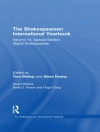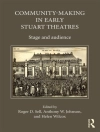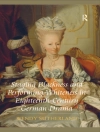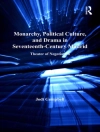New essays examining the differences and commonalities between late Weimar-era and early Nazi-era German cinema against a backdrop of the crises of that time.
Hitler’s
Machtergreifung, or seizure of power, on January 30, 1933, marked the end of the Weimar Republic and the beginning of the Third Reich, and German film scholarship has generally accepted this date as the break between Weimar and Nazi-era film as well. This collection of essays interrogates the continuities and discontinuities in German cinema before and after January 1933 and their relationship to the various crises of the years 1928 to 1936in seven areas: politics, the economy, concepts of race and ethnicity, the making of cinema stars, genre cinema, film technologies and aesthetics, and German-international film relations. Focusing both on canonical and lesser-known works, the essays analyze a representative sample of films and genres from the period. This book will be of interest to scholars and students of Weimar and Third Reich cinema and of the sociopolitical, economic, racial, artistic, and technological spheres in both late Weimar and the early Third Reich, as well as to film scholars in general.
Contributors: Paul Flaig, Margrit Frölich, Barbara Hales, Anjeana Hans, Bastian Heinsohn, Brook Henkel, Kevin B. Johnson, Owen Lyons, Richard W. Mc Cormick, Kalani Michell, Mihaela Petrescu, Christian Rogowski, Valerie Weinstein, Wilfried Wilms.
Barbara Hales is Associate Professor of History at the University of Houston-Clear Lake. Mihaela Petrescu is Visiting Lecturer at the University of Pittsburgh. Valerie Weinstein is Assistant Professor of Women’s, Gender, and Sexuality Studies and German Studies at the University of Cincinnati.
Table of Content
List of Illustrations
Acknowledgments
Introduction
‘Timid Heresies’: Werner Hochbaum’s
Razzia in St. Pauli (1932) – Christian Rogowski
Film as Pedagogy in Late Weimar and Early Nazi Cinema: The Role of the Street in Mobilizing the Spectator – Bastian Heinsohn
‘A Fairytale for Grown-ups’: Financial and Cinematic Crises in
Die Koffer des Herrn O.F. (1931) – Paul Flaig
‘Denn Gold ist Glück und Fluch dieser Welt’: Examining the Trope of ‘Gold’ in
Gold (1934) and
Der Kaiser von Kalifornien (1936) – Owen Lyons
Degenerate Disease and the Doctors of Death: Racial Hygiene Film as Propaganda in Weimar and Early Nazi Germany – Barbara Hales
‘White Jews’ and Dark Continents: Capitalist Critique and Its Racial Undercurrents in Detlef Sierck’s
April! April! (1935) – Valerie Weinstein
The
Zigeunerdrama Reloaded: Leni Riefenstahl’s Fantasy Gypsies and Sacrificial Others – Anjeana Hans
Regaining Mobility: The Aviator in Weimar Mountain Films – Wilfried Wilms
Brigitte Helm and Germany’s Star System in the 1920s and 1930s – Mihaela Petrescu
Foreign Attractions: Czech Stars and Ethnic Masquerade – Kevin B. Johnson
Objects in Motion: Hans Richter’s
Vormittagsspuk (1928) and the Crisis of Avant-Garde Film – Brook Henkel
Seeing Crisis in Harry Piel’s
Ein Unsichtbarer geht durch die Stadt (1933) – Kalani Michell
Playing the European Market: Marcel L’Herbier’s
L’Argent (1928), Ufa, and German-French Film Relations – Margrit Frölich
A Serious Man? Ernst Lubitsch’s Anti-War Film
The Man I Killed (a.k.a.
Broken Lullaby, USA 1932) – Richard W. Mc Cormick
Selected Bibliography
Notes on the Contributors
Index
About the author
Anjeana K. Hans is Associate Professor of German Studies at Wellesley College.












